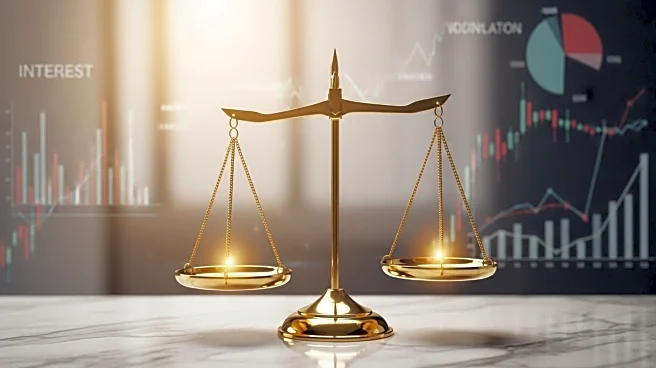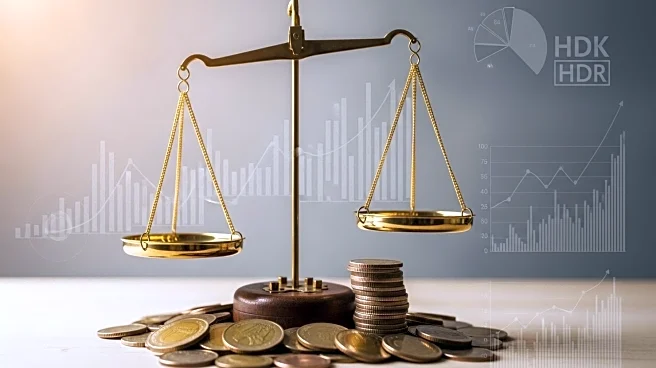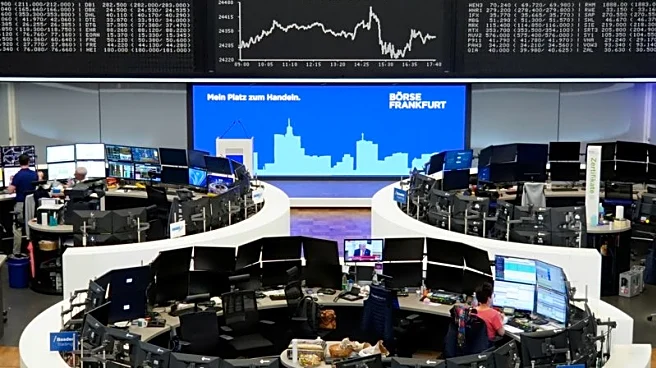What's Happening?
The Federal Reserve is expected to cut the key federal funds rate by a quarter-point during its next meeting on September 17, driven by a surprise drop in U.S. wholesale prices in August. The Producer Price Index for final demand dipped 0.1%, contrary to economists' expectations of a 0.3% increase. This softer-than-expected inflation data has led to a decrease in Treasury yields and a rise in stock indices, with the MSCI global stock index hitting a record high. Traders are confident in a 25 basis point rate cut, with some speculating on a larger half percentage-point reduction. The CME Group's FedWatch Tool indicates further rate cuts may occur in October and December.
Why It's Important?
The anticipated rate cut by the Federal Reserve is significant as it reflects the central bank's response to cooling inflation trends, which could impact various sectors of the U.S. economy. Lower interest rates typically encourage borrowing and investment, potentially stimulating economic growth. However, they also affect savings rates and can lead to increased asset prices, impacting investors and consumers. The decision comes amid geopolitical uncertainties and concerns over the Fed's independence, highlighted by a court ruling temporarily blocking President Trump from removing a Federal Reserve Governor.
What's Next?
The final hurdle to the expected rate cut is the upcoming consumer inflation data release. If inflation remains subdued, it could solidify the Fed's decision to cut rates. Additionally, the nomination of Stephen Miran as Federal Reserve governor is advancing, which may influence future monetary policy decisions. Market participants will closely monitor these developments, as well as geopolitical tensions that could affect economic stability.
Beyond the Headlines
The Federal Reserve's actions may have long-term implications for its perceived independence, especially in light of political pressures. The court ruling blocking President Trump from removing a Federal Reserve Governor underscores the ongoing debate over the central bank's autonomy. This situation could lead to legal challenges and discussions about the balance between political influence and economic policy.













